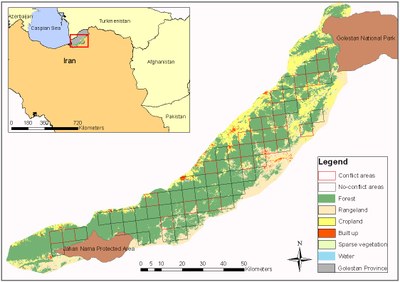Spatial risk model of livestock predation by Persian leopard in the Alborz Mountains, Iran
Clara Sichau
Livestock depredation by large carnivores and consequently, retaliatory persecution by humans, are among the oldest interactions between humans and wildlife in agricultural landscapes. Such conflicts are anticipated to increase in the future as more landscapes around the globe become human-dominated due to agricultural expansion and intensification. Despite the role of conflict in the extirpation of many large carnivores in different parts of the world, the influence of land-use change as a potential underlying driver of these conflicts has been poorly studied. In this study the spatial patterns of human-carnivore conflict in relation to a number of environmental and anthropogenic variables, including land-use, in Golestan Province, Iran were assessed. The study area is located in the Eastern Alborz Mountains and is home to one of the last population strongholds of the endangered Persian leopard (Panthera pardus saxicolor). The landscape’s natural vegetation, mainly deciduous Hyrcanian forest, has been converted at a high rate to urban and agricultural land uses in recent decades. 231 interviews with local communities in 69 6x6 km grids were used to collect data on the occurrence of human-leopard conflict, and observations of leopard and different prey species in the prior year. To assess the spatial patterns of land-use, Landsat 8 satellite images and a Random Forest algorithm to classify six land cover/use types were used. Human-leopard conflict was reported in 32.8% of the sampled grids. The study shows that the probability of human-leopard conflict was increasing with higher levels of deforestation and more fragmented remaining of forests. The results indicate the importance of landscape configurations in predicting human-carnivore conflict. Adoption of conflict mitigation measures, control of deforestation, and smart landscape planning that avoids conflict-prone landscape configurations will benefit the conservation of leopards and large carnivores in general.

